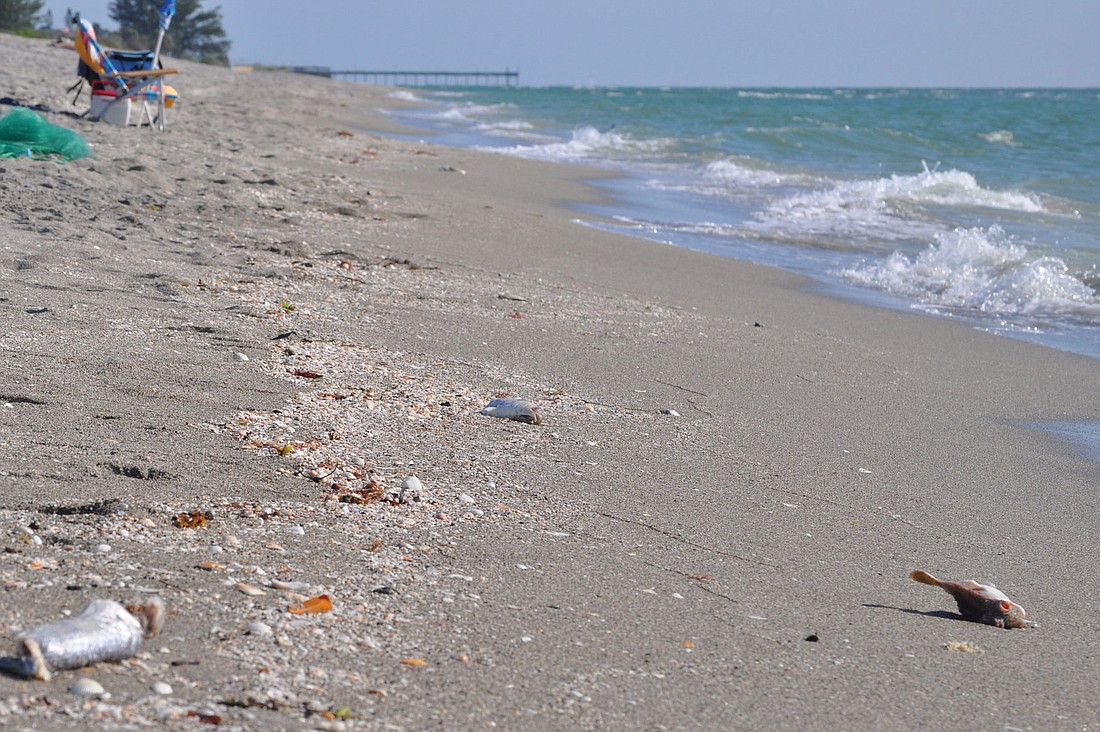- April 16, 2024
-
-
Loading

Loading

Water samples analyzed this week show that a red tide bloom, which was detected off Southwest Florida, has moved further north into Sarasota County.
Medium to high levels of Karenia brevis, the organism that causes Florida’s red tide, were discovered off southern Sarasota County, as far north as Casey Key, while low levels were detected further north in the county.
Satellite images show the bloom stretches from northern Lee County to Sarasota County, said Hayley Rutger, public relations coordinator for Mote Marine Laboratory. The bloom began in Charlotte County and has been slowly moving north.
Dead fish and some respiratory irritation among beachgoers has impacted the southern county beaches, from Blind Pass, the most southern beach in Sarasota County, to as far north as Casey Key, said George Tatge, parks and recreation manager with Sarasota County. Beachgoers have reported respiratory irritation at Manasota Beach, Venice Beach, Venice North Jetty and Casey Key.
At those beaches, lifeguards have noticed “a slight smell and red tint in the water,” Tatge said.
Currents in the Gulf of Mexico and wind directions will determine the future movement of the bloom.
The bloom appears to be intensifying, and it will probably remain offshore Sarasota County for some time, said Tom Higginbotham, environmental health administrator with the Sarasota County Health Department.
“The data shows that it is creeping north,” Higginbotham said.
While levels north of Casey Key were low as of Wednesday, Oct. 10, and effects were not present on Siesta Key or Lido Beach, Higginbotham said, “It wouldn’t be surprising to see those levels increase.”
Although not in the immediate forecast, a cold front would bring northerly winds that could keep the bloom from continuing north.
“That’s what we hope for, a nice crisp cold front to come through,” Tatge said.
Mote scientists are continuing to collect water samples and work with the county health department. Mote has also deployed its autonomous underwater vehicle, nicknamed “Waldo,” that can test for red tide under the Gulf of Mexico’s surface and determine which direction currents are moving.
As of Wednesday, lifeguards on Siesta had not observed the indications of red tide that were present south of Casey Key.
In total, 7 tons of fish and debris was removed from South Sarasota County beaches from Friday through Monday.
“For the most part, the fish we are picking up are small, pinfish or some fish a foot long or so,” Tatge said. “Someone did find a 14-inch snook. Chances are that was a red-tide mortality. For the most part, though, it’s small pinfish.”
People with underlying chronic respiratory problems, such as asthma, should avoid red tide areas, especially when winds are blowing toxins on or near shore, Higginbotham said.